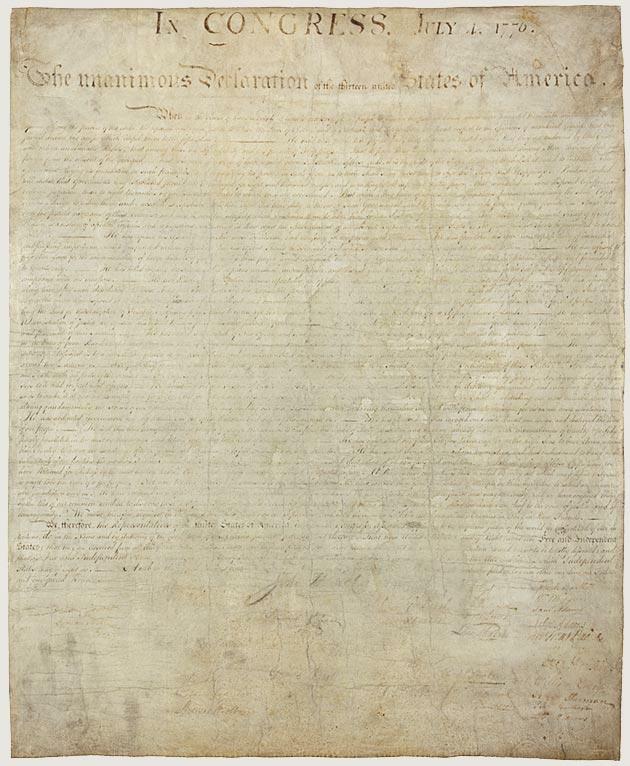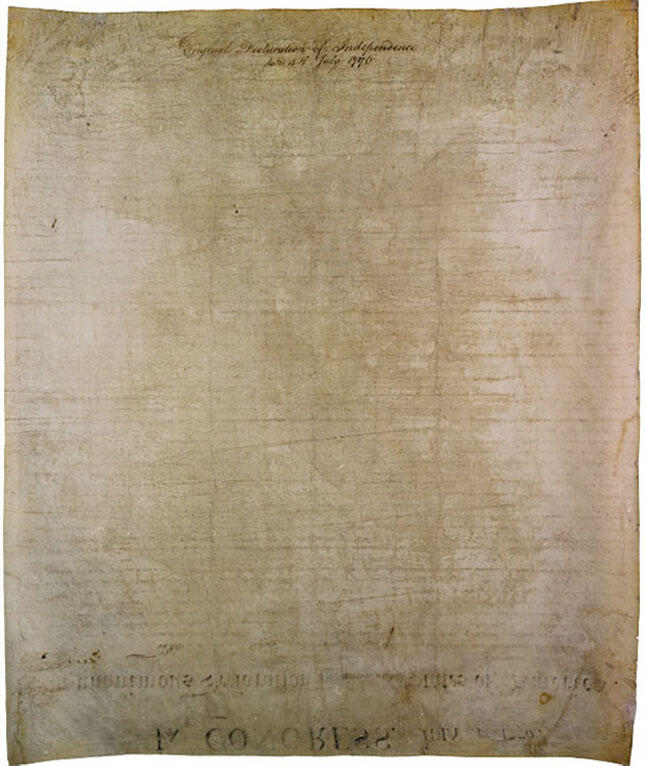Introduction
National Archives is a unique source providing an insight into the history of the United States genesis by presenting the founding documents, known as the Charters of Freedom. They include the Declaration of Independence, the Constitution, and the Bill of Rights (America’s founding documents, 2017). For the research, we will study the Declaration of Independence by investigating its history, context, results, and influence on modernity.
Description
The Declaration of Independence is different from other founding documents because it is powerful even though it has no legal force. Abraham Lincoln described it as “a rebuke and a stumbling-block to tyranny and oppression” (as cited in The Declaration of Independence, para. 1). Figures 1 and 2 illustrate the current image of the document.


It is apparent that the document is faded due to its long-term public display. Nevertheless, it remains powerful and inspiring for people who keep fighting for equality and freedom.
Origins and Context
Once being adopted in Philadelphia on July 4, 1776, the Declaration of Independence became the first step of our country towards democracy. Through the document, the British colonies in North America declared themselves thirteen newly independent sovereign states and no longer under British rule. The major goal of the document was to reject the monarchy and to claim that people were “themselves sovereign” (Sayre, 2013, p. 379).
This political revolution served as a tool for people to obtain their rights. The chief drafter of the Declaration was Thomas Jefferson. He promoted liberty, life, and happiness as the unalienable rights of every single person. He believed that it was essential to establish a new Government that would consider the rights of the nation and that would bear the responsibility to people for its work (Sayre, 2013). The Declaration of Independence became the first founding document of the United States and was the first document that proved the independence of colonies by promoting democracy.
Influence
The Declaration of Independence has become an example of how to solve the problem of rights violation. David Armitage (n.d.), the Lloyd C. Blankfein Professor of History and Director of Graduate Studies in History at Harvard University, thinks that once people notice that their rights are violated, they will “seek to protect those rights by forming their own state” (para. 13). For example, in 2008, most Albanians in Kosovo declared their independence from Serbia by forming the corresponding document (Armitage, n.d.).
Some believe that along with other founding documents, the Declaration has become “a blueprint for how a grievance could be transmuted, through democratic institutions, into a right” (Lustig, 2016, para 6). Indeed, we can observe the influence of the document, if we take the women’s or minorities’ fight for equality as an example. The key point of this fight is the desired independence. In this context, the Declaration seems to be a baseline for people who feel that their rights or cultural patterns are ignored.
Conclusion
Thus, we have briefly covered the history of the Declaration of Independence by mentioning its origins, context, and influence on contemporaneity. It became evident that this document was meant to be a starting point for democracy as it promoted equality of people and their independence from monarchy. By suggesting to institute the new Government, the Declaration drafters intended to give a voice to the nation which is seen as a political revolution in the context of the British monarchy and its colonies. It also became clear that the founding documents have an influence on cultural patterns not only in the US but also beyond its borders.
References
America’s founding documents. (2017). Web.
Armitage, D. (n.d.). The Declaration of Independence in a global perspective. Web.
Lustig, J. (2016). From ‘Hamilton’ to Donald Trump: Are all ‘Grievances’ created equal? The New York Times. Web.
Sayre, H. M. (2013). Discovering the humanities (2nd ed.). Upper Saddle River, NJ: Prentice Hall
The Declaration of Independence. (2017). Web.